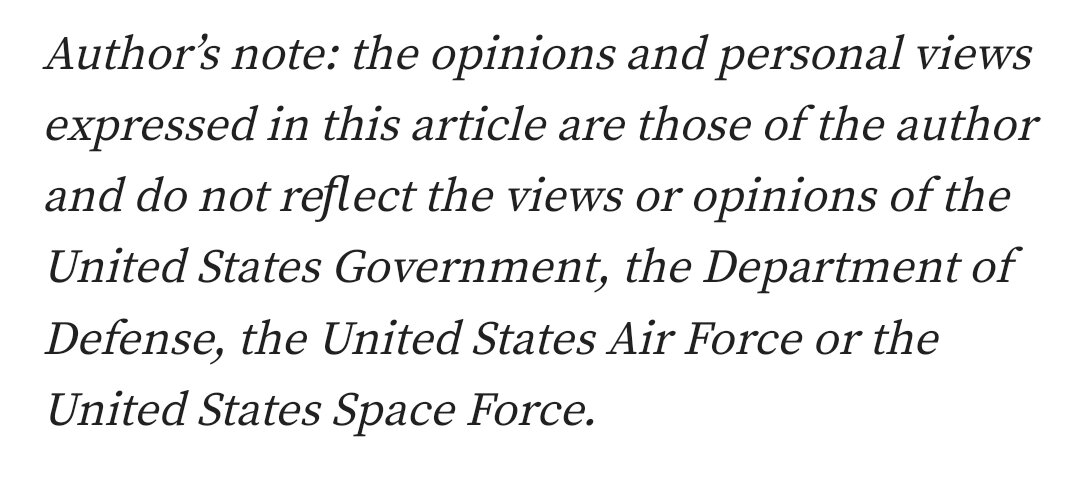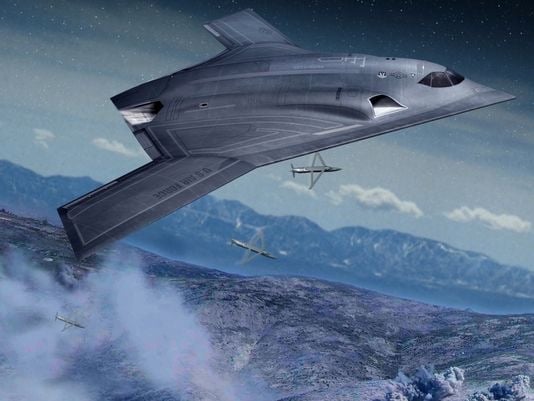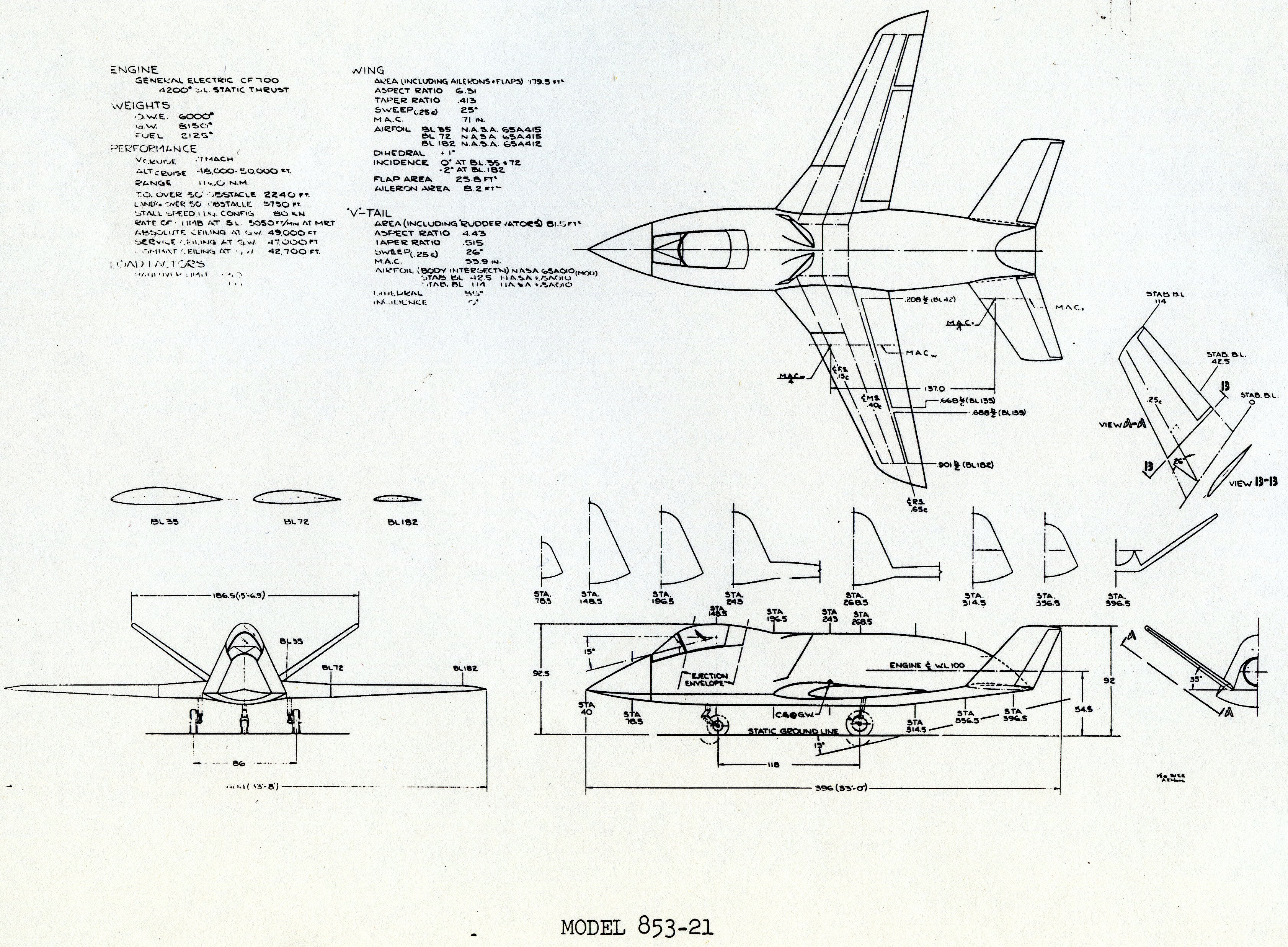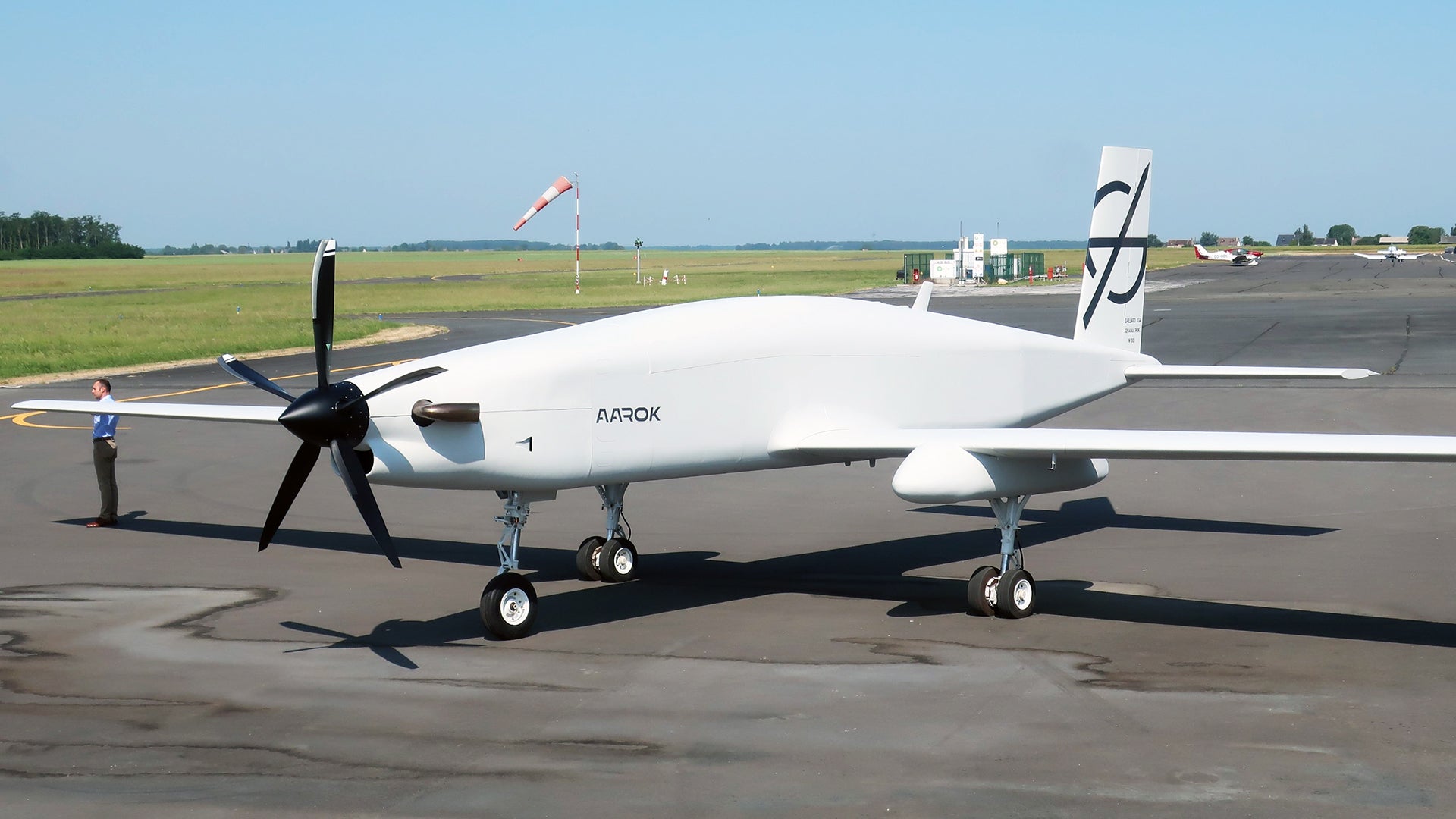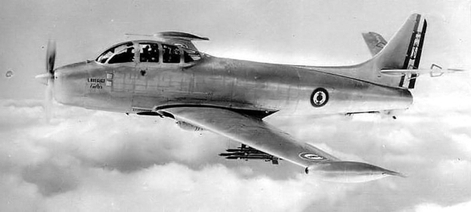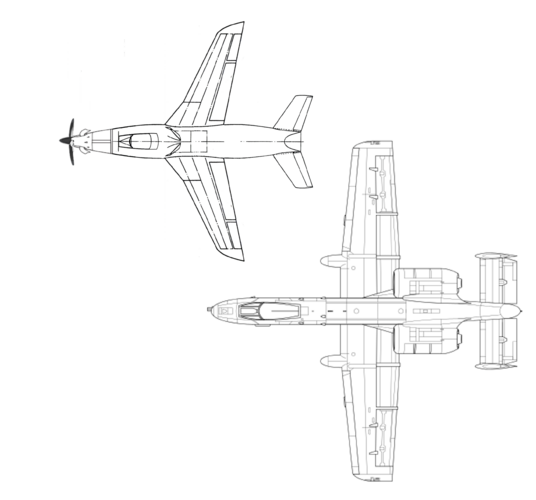In terms of what « looks right », I keep thinking of something like Boeing’s Quiet Bird (Model 853).
This had a slightly-swept wing for good all-round performance, as befits an observation plane (low 80 knot stall speed, Mach 0.7 cruise up to 50,000 feet). Lots of internal volume in the fuselage. Reasonable level of RCS reduction.
Now imagine scaling it up to fit an internal weapons bay for Hellfire / SDB sized guided ordnance (I personally would omit the gun or use an external gunpod like the F-35B’s). Also could add streamlined (low-RCS) optional wingtip rocket pods.
Maybe stretch a little to reduce drag at higher speeds (Mach 0.7-0.9) - see this nice what-if in the above thread:
Still leaves the question of engine separation and redundancy, plus optimizing for low speed loiter, so I’d be tempted to add a PT6 turboprop in the nose like on the Aarok UAV (which would allow to throttle back the jet engine at low speeds and make use of the propeller’s better efficiency):
This would produce a fast mixed-propulsion combat air support aircraft with twin engine redundancy, excellent loiter, and the ability to operate across a wide range of speeds.
A little like the early 50s Breguet Vultur, perhaps?
